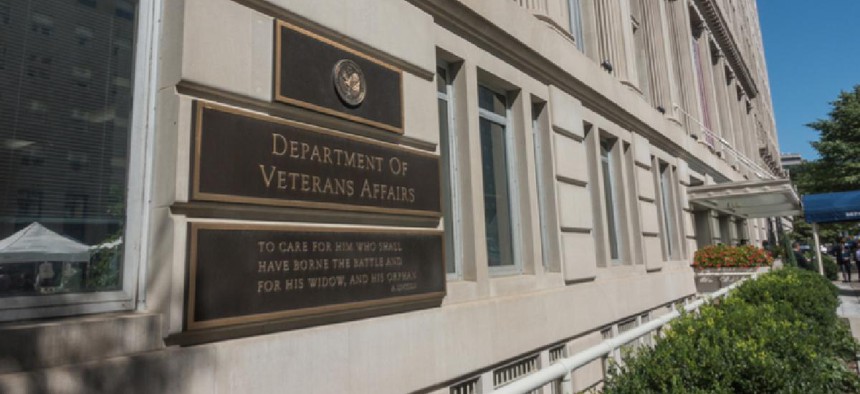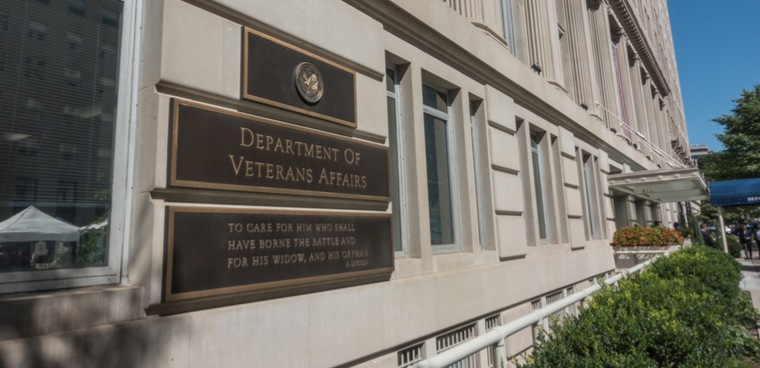How VA can succeed with its EHR mega-program

The former CIO of the Department of Veterans Affairs offers some ideas for course correction in the agency's flagging $20 billion–plus Electronic Health Records Modernization program.

Last week, FCW published my article entitled Why VA's mega-EHR program is failing. As a follow-up, I want to make a series of recommendations on how the Department of Veterans Affairs can improve their chances of success on their Electronic Health Record Modernization (EHRM) program.
These recommendations are based on experiences with the challenges of delivering large programs at VA, particularly the development and implementation of the Veterans Benefits Management System. VBMS is a $1B+ system that was part of a successful large-scale culture change in Veterans Benefits Administration's claims processing organization driven by the undersecretary for benefits (USB) from 2011 to 2015. The success of VBMS and other programs at VA, where so many programs have failed, can provide insights into how EHRM can improve its chances of success.
The undersecretary for health must own program success
EHRM is, first and foremost, a medical system, and the Veterans Health Administration is the "business owner" of the system. Decisions about trade-offs between program needs and medical needs must be made, and "owned" by the business owner. For EHRM, that must be the undersecretary for health (USH), because s/he has both the responsibility and the authority to make decisions about the programs that affect medical care at VA. And the VA CIO must play his/her role as the technology provider on EHRM, working with the vendor to deliver the system components that support the defined business processes.
This organizational structure was key to the success of VBMS. The USB made certain her organization was "all in" for the success of the transformation, including the success of the new system. The CIO was her partner, and the secretary held them both accountable for program success. Perhaps most importantly, combining agile with this management approach meant that problems were escalated quickly and typically resolved at a weekly meeting co-chaired by the USB and CIO. Decisions were made quickly, jointly and publicly, allowing program execution to proceed. The same dynamic occurred in 2019 with the delivery of Forever GI Bill, and Caregivers in 2020. VA can do – and has done – this.
The VA is still in the process of finding an undersecretary for health and a CIO – both positions require presidential nomination and Senate confirmation. But a well-designed program that lasts a decade or longer must be able to accommodate temporary or acting leadership. Currently, VA has trusted career professionals in each of those two key roles.
Build a program and schedule based on agile principles
Agile focuses on having real users as part of the software definition, development, test and implementation. Dedicating high-value operational employees to the design and build process can be painful, but "voice of the user" input is imperative to system success. Agile also demands demonstration (not description) of what has been accomplished every two weeks, with critique by real users. Agile delivers incremental value, not the "big bang" or waterfall development methodology that has plagued many prior VA programs. It's hard to fake progress in that environment, and it greatly adds to accountability between team members. Especially once implementation begins at a medical center, an agile approach is essential to being seen as responsive to end-user issues and also to build on successful delivery of functionality.
VA OIT has had great success delivering programs using agile, including GI Bill, VBMS, Blue Button and more recently with MISSION Act, Forever GI Bill, and Caregivers Program. Adhering to agile principles, not just for software development but for other program delivery aspects as well, is an approach with which VA, and other federal agencies, have proven successful at breaking out of the legacy failure pattern for large programs.
Figure out how it helps VHA staff
The strongest asset VA has is their staff's passion in caring for veterans. This same passion creates the change management challenges that face the EHRM program. EHRM will be deployed to medical staff at hospitals and clinics around the world, not just in Washington. Why would a doctor, nurse or other medical staff, familiar with CPRS/VistA, want to make the change to Cerner? What's in it for them? How does it help them deliver better health outcomes? If you can't honestly answer these questions, then the challenges that inevitably arise when making the EHR transition -- to staff productivity, patient safety and quality of care -- will sink the program. At VA, "because we said so" is always countered with "you will hurt patients."
The original development of VistA and the VBMS program both provide change management experiences that could be useful to EHRM. VistA development was largely done directly at the VA hospitals, with clinicians in the loop as software functionality was designed, implemented, tested and refined. And while original development on VistA was done decades ago, the lessons from that time remain useful. EHRM must get the program staff out of Washington and living with the clinicians and administrators at VA Medical Centers. Get the medical staff "in the loop" with the system developers. Be there to listen every day, and demonstrate a willingness to rapidly respond and adapt EHRM to the provider in the field and patient needs and problems.
Similarly on VBMS, close connection to the users in the field was critical. Before the system was built, the undersecretary for benefits established change management agents at every VBA Regional Office to connect local staff directly into the design and build of the system. VBA established a Command Center to expedite feedback from users, particularly on imminent issues that required rapid response. And the USB chaired weekly "Good, Bad, and Ugly" meetings with VBA, OIT and bargaining unit employees to get unvarnished input on program and user issues. As a result, when the VBMS system faced critical "this won't work for us" issues that affected user acceptance, VBA and OIT staff were able to rapidly respond and deliver updates.
Surface and deal with the program's objective status
The single biggest cause of failure in large government programs is the suppression of known problems. The more trouble a program is in, the harder it is to get factual information about problems and their causes. Critical problems must be escalated quickly, to the USH/business owner, the secretary, Congress or the White House if necessary, to ensure that timely decisions are made and the program stays on track. In recent Congressional testimony, VA has been very specific about the need for better program governance. As with other successful programs at VA, and in large commercial-sector health care entities, large programs such as an major EMR replacement require an "all-hands on deck" commitment and cannot be left to just a few-select business, system and acquisition leaders. Governance for the EHRM must involve everyone from the CEO, the COO and all members of the c-suite.
Keep Congress positive
Frequent and open communication with Congress about problematic programs will go a long way toward avoiding the type of oversight hearings the EHRM program has experienced in the past few weeks. At this point, VA would be well advised to over-communicate and establish strong credibility with congressional staff regarding the status of the EHRM program. All large programs have problems, and all congressional staffers have many sources of information about what is happening within the program. Though it can be painful at times, keeping Congress involved and informed on a problematic program is the best way to obtain their support and buy-in during program difficulties. Also, as with recent hearings, Congress should consult with commercial-sector stakeholders, such as c-suite and board of director members. They have the experience of implementation and oversight which will help all within the government ecosystem
There are, of course, many things VA cannot change. Large federal programs are hard, and they frequently fail. VA has its own culture, and what works at another agency (particularly the Department of Defense) may not work in the VA culture. And Washington remains Washington – where outsiders are going to critique every decision made. But by following program approaches that have worked within the VA culture in the past, VA can improve its chances at success in its EHR mega-program.


